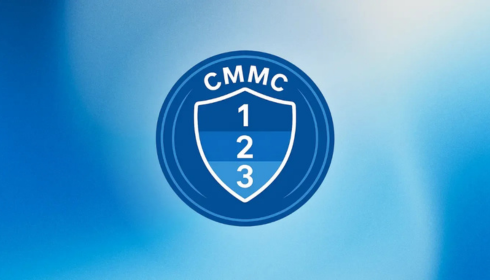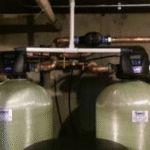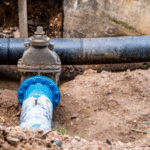Adapting to constant change in defense contracting feels less like a checklist and more like a moving target. Companies tied to the Department of Defense face higher expectations with each update, and keeping pace requires more than surface-level compliance. Risk and compliance services step in to translate shifting CMMC compliance requirements into strategies that help businesses remain contract-ready while strengthening cyber resilience.
How Risk Services Translate Shifting CMMC Mandates into Practical Roadmaps
Risk services play a central role in interpreting complex requirements and converting them into manageable action steps. A C3PAO or a CMMC RPO often acts as a guide, ensuring that technical language and layered controls are shaped into a roadmap executives and security teams can realistically follow. These plans balance regulatory mandates with operational realities, aligning resources where they provide the most impact.
Practical roadmaps also prioritize based on the type of certification sought. CMMC level 1 requirements emphasize basic safeguarding practices, while CMMC level 2 compliance extends deeper into policies, procedures, and monitoring. Risk professionals examine where a company stands, identify gaps, and create a sequence of milestones to meet certification goals without overwhelming internal teams.
Mapping Emerging Dod Cybersecurity Rules into Compliance Frameworks
The Department of Defense continuously sharpens its cybersecurity posture, issuing new rules that organizations must integrate into their compliance frameworks. Risk and compliance services help map these rules against existing internal controls to see where enhancements are needed. This mapping exercise ensures that each requirement is not only understood but also embedded into ongoing business practices.
For CMMC level 2 requirements, this may mean aligning vendor management practices, incident response workflows, and encryption standards to meet updated thresholds. Risk consultants provide clarity on how these rules connect with other federal mandates, reducing the risk of duplication or misinterpretation. By embedding new DoD directives into established compliance structures, businesses can maintain continuity while meeting higher expectations.
When Regulatory Changes Require Recalibration of Risk and Compliance Posture
Regulatory changes can trigger an immediate recalibration of compliance strategies. A personal review of risk management policies often becomes necessary to confirm whether the existing approach holds up under the updated CMMC compliance requirements. If a policy fails to meet the new threshold, risk services assist in redesigning it to maintain certification eligibility.
This recalibration is not just a box-checking task. It reshapes how leaders allocate budget, how technical controls are monitored, and how compliance teams interact with auditors. Whether preparing for CMMC level 1 requirements or planning for full CMMC level 2 compliance, organizations benefit from risk experts who can adjust posture with agility while keeping business operations steady.
What Risk Assessments Reveal About Gaps Under New CMMC Control Updates
Risk assessments provide a lens into the areas most vulnerable under evolving CMMC control updates. They test the effectiveness of technical safeguards, review incident response maturity, and uncover weaknesses in staff training. Findings from these assessments often reveal gaps between stated policy and real-world practice.
For example, a company may believe it meets CMMC level 2 requirements for multi-factor authentication, yet an assessment may uncover inconsistent enforcement across user groups. Risk and compliance services use these findings to craft targeted remediation efforts, ensuring no overlooked gaps put certification in jeopardy. Assessments also prepare leadership for C3PAO audits, giving them confidence in their compliance posture.
Aligning Organizational Processes to Meet Updated CMMC Requirement Sets
As requirements shift, aligning organizational processes becomes essential. Compliance is not solely a technology function—it also touches procurement, HR, and vendor management. Risk consultants help adjust workflows so that each department supports the updated CMMC compliance requirements without disrupting core business activities.
In practice, this alignment may involve creating new procedures for onboarding subcontractors or revising how sensitive data is handled during employee exits. CMMC RPO professionals provide templates and frameworks to streamline this process, reducing guesswork. By weaving compliance into daily operations, businesses create a culture that naturally supports certification at both CMMC level 1 and level 2 compliance levels.
Measuring the Impact of Revised CMMC Requirements on Policy, Procedure, and Technical Controls
Every revision to the CMMC framework forces a review of how policies and technical safeguards perform. Risk and compliance services measure this impact by conducting gap analyses and policy audits, then linking those findings to updated requirements. This ensures that written policies match operational behavior, reducing the likelihood of audit failures.
On the technical side, updates may require stronger logging, broader encryption, or more frequent patching. C3PAO assessments hold organizations accountable for proving these technical controls work as intended. Risk professionals help connect the dots between revised requirements and practical execution, reducing the stress of preparing for audits.
Strengthening Governance and Oversight As Cmmc Requirements Evolve
Governance and oversight set the tone for how well compliance sticks. As CMMC requirements evolve, risk services highlight the need for leadership engagement in cybersecurity planning. Boards and executives must not only approve funding but also actively oversee how compliance programs adapt to change.
Enhanced governance may include forming internal compliance committees, assigning accountability to executives, and demanding regular reporting on progress toward certification. This oversight ensures that CMMC level 2 requirements are not treated as a one-time project but as a continuous practice. Risk and compliance advisors support this effort by setting benchmarks, creating reporting structures, and keeping oversight bodies informed of new DoD updates that impact compliance.










Leave a Reply
You must be logged in to post a comment.